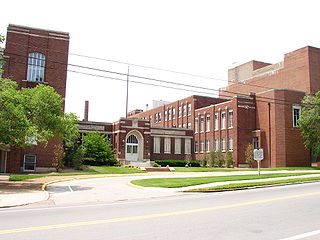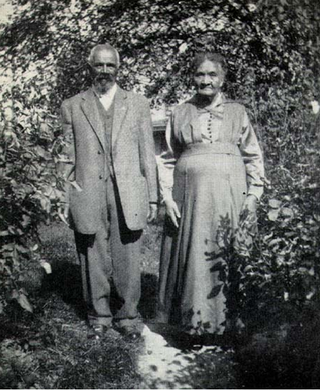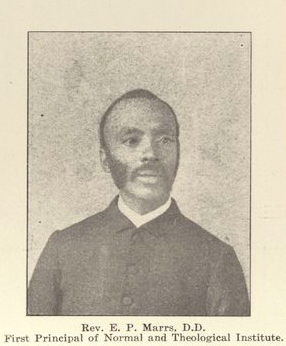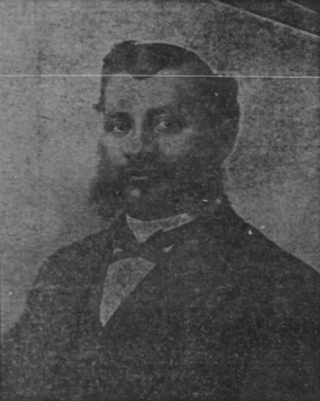Related Research Articles

Meharry Medical College is a private historically black medical school affiliated with the United Methodist Church and located in Nashville, Tennessee. Founded in 1876 as the Medical Department of Central Tennessee College, it was the first medical school for African Americans in the South. While the majority of African Americans lived in the South, they were excluded from many public and private racially segregated institutions of higher education, particularly after the end of Reconstruction.

James Morris Lawson Jr. is an American activist and university professor. He was a leading theoretician and tactician of nonviolence within the Civil Rights Movement. During the 1960s, he served as a mentor to the Nashville Student Movement and the Student Nonviolent Coordinating Committee. He was expelled from Vanderbilt University for his civil rights activism in 1960, and later served as a pastor in Los Angeles for 25 years.

John Hope, born in Augusta, Georgia, was an American educator and political activist, the first African-descended president of both Morehouse College in 1906 and of Atlanta University in 1929, where he worked to develop graduate programs. Both are historically Black colleges.

James Thomas Rapier was an American politician from Alabama during the Reconstruction Era. He served as a United States representative from Alabama, for one term from 1873 until 1875. Born free in Alabama, he went to school in Canada and earned a law degree in Scotland before being admitted to the bar in Tennessee.

Benjamin "Pap" Singleton was an American activist and businessman best known for his role in establishing African American settlements in Kansas. A former slave from Tennessee who escaped to freedom in Ontario, Canada in 1846, he soon returned to the United States, settling for a period in Detroit, Michigan. He became a noted abolitionist, community leader, and spokesman for African-American civil rights.

Octavius Valentine Catto was an American educator, intellectual, and civil rights activist. He became principal of male students at the Institute for Colored Youth, where he had also been educated. Born free in Charleston, South Carolina, in a prominent mixed-race family, he moved north as a boy with his family. After completing his education, he went into teaching, and becoming active in civil rights. He also became known as a top cricket and baseball player in 19th-century Philadelphia, Pennsylvania. A Republican, he was shot and killed in election-day violence in Philadelphia, where ethnic Irish of the Democratic Party, who were anti-Reconstruction and had opposed black suffrage, attacked black men to prevent their voting.

Allen Allensworth was an American chaplain, colonel, city founder, and theologian. Born into slavery in Kentucky, he escaped during the American Civil War by joining the 44th Illinois Volunteers as a Union soldier. After being ordained as a Baptist minister by the Fifth Street Baptist Church, April 9, 1871, he worked as a teacher, led several churches, and was appointed as a chaplain in the United States Army. In 1886, he gained appointment as a military chaplain to a unit of Buffalo Soldiers in the West, becoming the first African American to reach the rank of lieutenant colonel in the United States Army. He served in the Army for 20 years, retiring in 1906.

Camp Nelson National Monument, formerly the Camp Nelson Civil War Heritage Park, is a 525-acre (2.12 km2) national monument, historical museum and park located in southern Jessamine County, Kentucky, United States, 20 miles (32 km) south of Lexington, Kentucky. The American Civil War era camp was established in 1863 as a depot for the Union Army during the Civil War. It became a recruiting ground for new soldiers from Eastern Tennessee and enslaved people, many of whom had fled their living conditions to be soldiers.

Peter Bruner was born a slave in Kentucky. He escaped enslavement to join the Union Army during the Civil War. After the war, he married and raised a family in Ohio. Collaborating with his daughter, he published his autobiography.
Virginia E. Broughton was an African American author and Baptist missionary. One of four students in the first class at Fisk College in 1867, she later became a recognized religious scholar, writing articles for National Baptist Union and National Baptist Magazine. As a prominent member of the Baptist church and National Corresponding Secretary of the National Baptist Convention, she worked to ensure that the interests of African American religious women were addressed by the governing body of the Baptist denomination. Broughton was licensed as a missionary and subsequently commissioned to the mission field.

Green Currin was the first African American to serve in the Oklahoma Territorial Legislature that existed before statehood in 1907. He was the author of the Oklahoma Territory's first civil rights legislation, a proposal to penalize racial violence, that failed by one vote.

Preston Taylor was an African-American businessman, minister and philanthropist. In the early 20th century he was considered one of the most influential leaders of Nashville, Tennessee's black community. He created Greenwood Cemetery, which is the second oldest African-American cemetery in Nashville, and Greenwood Park, which was the first park for African-American communities in Nashville. A later public housing project was named in his honor.
John Francis Cook Jr. was a prominent educator, politician, tax collector, businessman, community organizer, civil rights activist, and member of the African-American, Washingtonian elite of the late 19th century. Born into an established, middle-class family in Washington D.C., Cook was believed to be D.C.'s richest black resident in 1895 with a net worth of over two hundred thousand dollars. As a civilian and in government, Cook championed civil rights causes aimed at uplifting D.C.'s black community, mainly through education, community engagement, and political activism. Cook was also a staunch opponent of Jim Crow laws, the Colonization movement, and other causes designed to put African Americans at the fringes of American life.

Elijah P. Marrs was a minister and educator in Louisville, Kentucky. He was a sergeant in the 12th Regiment Heavy Artillery U.S. Colored Troops during the American Civil War (1861–1865). After the war he taught in various schools and helped organize Loyal Leagues to defend blacks from attacks by the Ku Klux Klan. Together with his brother, Henry, he helped found what became Simmons College of Kentucky in Louisville in 1879.

Nettie Langston Napier was an African-American activist for the rights of women of color during the early part of the 20th century. She lived in Nashville, Tennessee.
Ephraim Grizzard and Henry Grizzard were African-American brothers who were lynched in Middle Tennessee in April 1892 as suspects in the assaults on two white sisters. Henry Grizzard was hanged by a white mob on April 24 near the house of the young women in Goodlettsville, Tennessee.
Green Polonius Hamilton (1867–1932) was an American educator, principal, and author who was prominent in the African-American community of Memphis, Tennessee.

Minnie Lee Crosthwaite was an American community organizer, women's activist, and social worker, one of the first Black social workers in Kansas City, MO.
George Washington LeVere was an African American pastor, educator, abolitionist, and civil rights activist. As president of the African Civilization Society, LeVere met with President Abraham Lincoln and discussed the educational needs of freedmen. LeVere was a chaplain with the United States Colored Troops and served as a delegate to two Colored National Conventions and numerous Tennesee Republican Conventions. He was also the National Grand Master of the Prince Hall Freemasons from 1877 to 1886.

George F. Bowles was a lawyer, militia colonel, chief of police and state legislator in Mississippi.
References
- ↑ Carter, Tomeiko Ashford (30 August 2010). Virginia Broughton: The Life and Writings of a Missionary. University of Tennessee Press. pp. xxi–xxii. ISBN 9781572337091 . Retrieved 2 April 2022.
- 1 2 Freedom's Lawmakers by Eric Foner Louisiana State University Press (1996) page 220
- ↑ "African American Legislators".
- ↑ Lovett, Bobby (1999). The African-American History of Nashville, Tennessee, 1780-1930: Elites and Dilemmas (Black Community Studies). The University of Arkansas Press. p. 108. ISBN 9781557285560 . Retrieved 2 April 2022.
- ↑ "Death of Prominent Colored Man". Asheville Union and American. July 8, 1875. Retrieved 2 April 2022.
This article needs additional or more specific categories .(April 2022) |